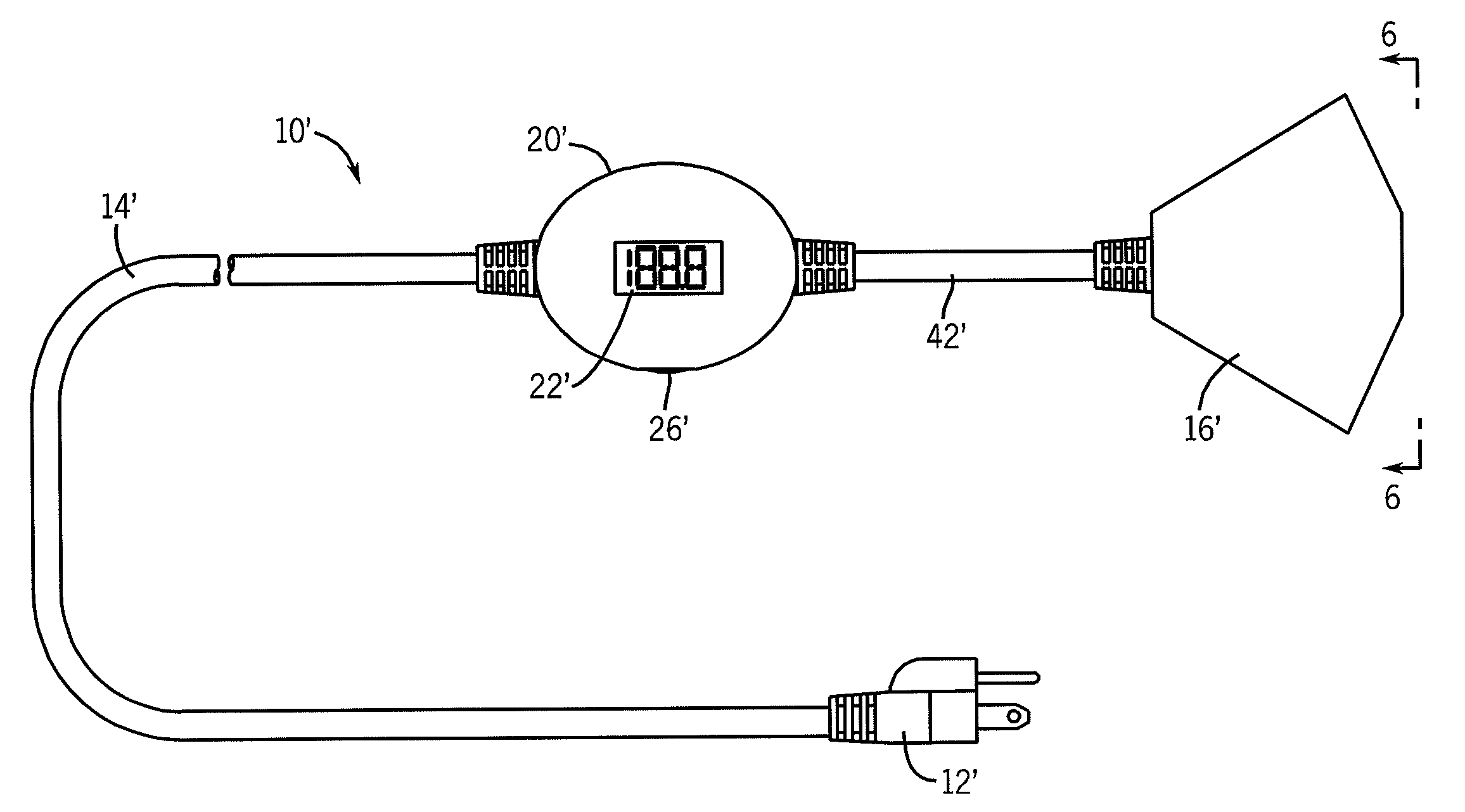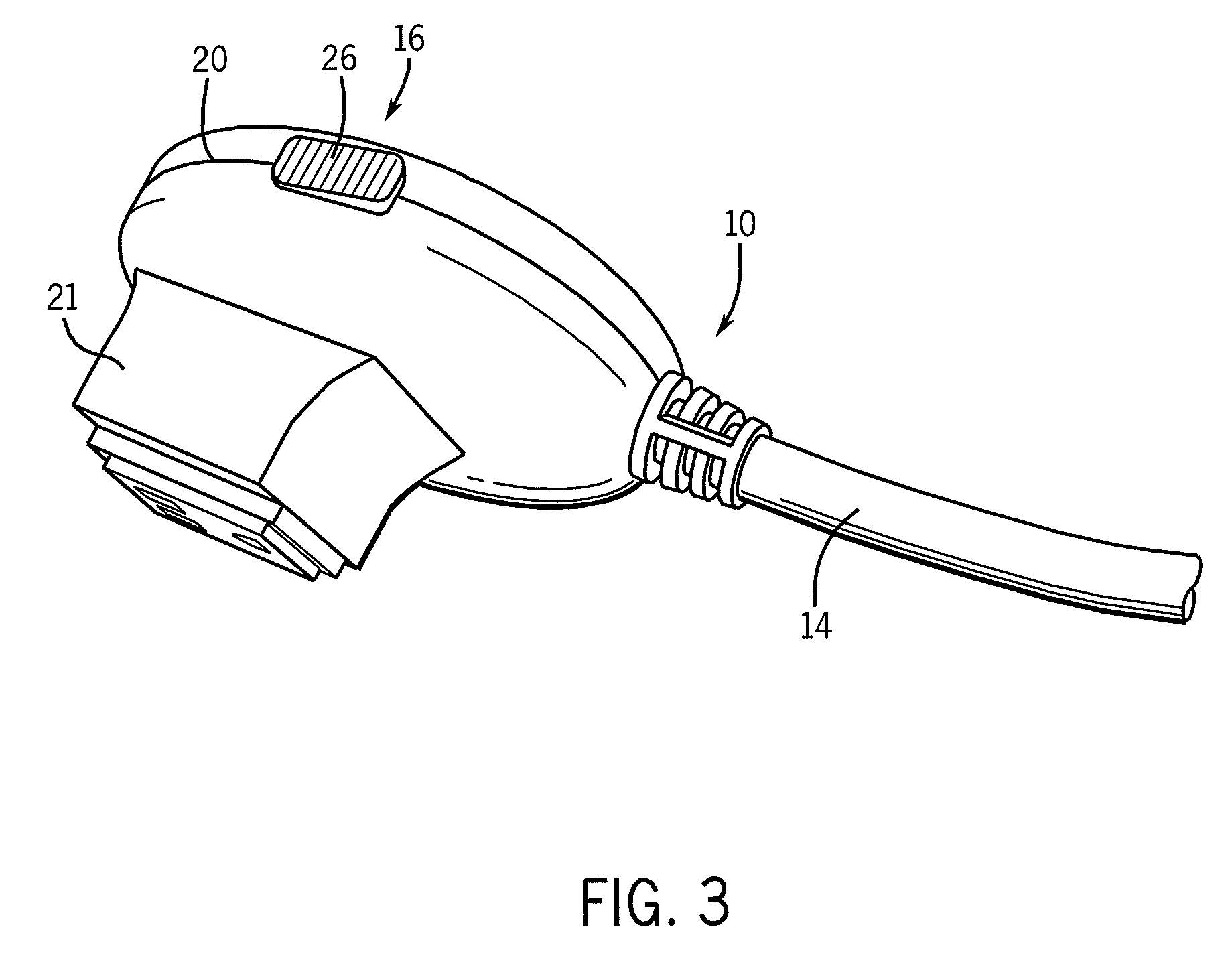Plug-in amp/watt power meter
a power meter and plug-in technology, applied in the direction of coupling device connection, instruments, transportation and packaging, etc., can solve the problems of determining the electrical load, i.e., current draw, time-consuming to electrically isolate the appropriate electrical device, etc., to achieve cost savings, light weight, and high portability
- Summary
- Abstract
- Description
- Claims
- Application Information
AI Technical Summary
Benefits of technology
Problems solved by technology
Method used
Image
Examples
first embodiment
[0022]With regard now to the drawing figures in which like reference numerals designate like parts throughout the disclosure, a plug-in power meter constructed according to the present invention is indicated generally at 10 in FIG. 1. The power meter 10 includes a plug 12 disposed at one end that may be engaged with a conventional electrical outlet (not shown), and a cord 14 extending outwardly from the plug 12. The cord 14 contains conductive wires (not shown) that enable electrical power to be supplied from the outlet to which the plug 12 is connected, through the cord 14 to a receptacle 16 attached to the cord 14 opposite the plug 12. The receptacle 16 includes a number of openings 18 in a configuration similar to that of a conventional outlet, such that a plug (not shown) connected to a suitable electric device or appliance (not shown), such as a furnace, air conditioner, sump pump, microwave oven, refrigerator, freezer, toaster, coffee maker, computer, radio, and the like, can ...
second embodiment
[0028]In a second embodiment on the present invention as shown in FIGS. 5-6, in which like components are designated with primed reference characters, the power meter 10′ includes the plug 12′, the cord 14′, and the housing 20′ with the display 22′ and the switch 26′ as in the previous embodiment. The cord 14′ is preferably formed to have a length similar to that for a normal extension cord. However, the power meter 10′ also includes a second cord 42′ that extends away from the housing 20′ opposite the cord 12′ to a receptacle 16′. It is understood that either of the cords 14′ or 42′ may have any desired length. The receptacle 16′ includes multiple sets of openings 18′ in the configuration of a conventional electrical outlet, such that multiple plugs from multiple electric devices or appliances can be simultaneously connected to the receptacle 16′ for determining a combined amperage or wattage for all of the appliances when in operation. Additionally, the receptacle 16′ can include ...
PUM
 Login to View More
Login to View More Abstract
Description
Claims
Application Information
 Login to View More
Login to View More - R&D
- Intellectual Property
- Life Sciences
- Materials
- Tech Scout
- Unparalleled Data Quality
- Higher Quality Content
- 60% Fewer Hallucinations
Browse by: Latest US Patents, China's latest patents, Technical Efficacy Thesaurus, Application Domain, Technology Topic, Popular Technical Reports.
© 2025 PatSnap. All rights reserved.Legal|Privacy policy|Modern Slavery Act Transparency Statement|Sitemap|About US| Contact US: help@patsnap.com



